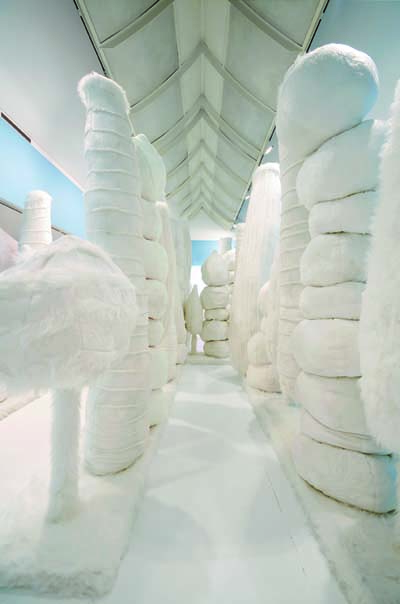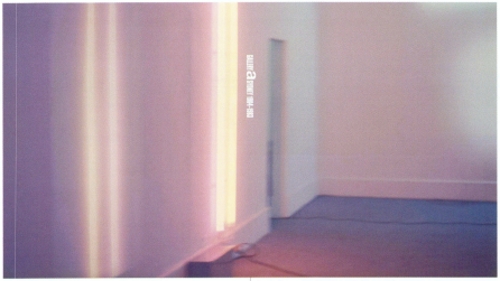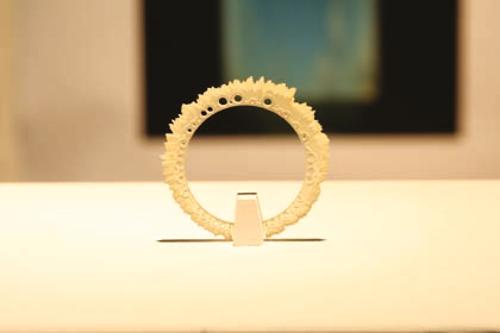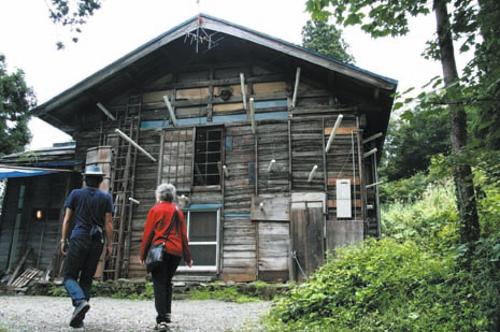
Heide's twenty year survey of Kathy Temin’s work is accompanied by an excellent and substantial eighty-two page color catalogue with essays by Jason Smith, Sue Cramer, Naomi Evans and a recent conversation between Kathy Temin and Andrew Renton.
The essays focus on the key subjects of Temin’s practice: the art history and theory in her work; the place of the home/house as a public idea for an object aesthetic and her use of materials normally used for hobby/craft/displays. Cramer examines Temin’s later immersive structures as both witnesses to loss and monuments to the Holocaust.
The transcendent strategy of Temin’s work is comic sentiment. Her signature of the furry, quirky, absurd and absurdly erotic is a playpen and sandpit world of 'making’ that is child-like in reference and essentially demonstrative of the expressive as inseparable from the temporal.
Her objects declare the half-made, half-remembered quotations of pop design and manufacture. They are nostalgic decorative elements partly seen, partly re-created from the embarrassments of private wardrobes, defunct living rooms and toyboxes, of surfaces and textures that might be memories; invitations into both the naivety and adventure of the child’s labyrinth of imagination.
The installations suggest Santa caves or textile storage rooms, stockrooms or window dressings set aside from their intended but now expired moments of display. As a whole they are the efforts of the serious and committed hobbyist who as neither amateur nor valorised art practioner worries about kitsch as either minor or major. Temin’s visuality is the unsafe place of seduction, aversion and revulsion; webs of fibrous attraction whose true purpose is unknown but irrational for both hobbyist and artist. Both ‘makers’ must be rhetorically forgiven for they know not ontologically what they do. They learn who they are becoming in the process of making.
Wall and floor forms unravel metaphorically; strings and cords randomly shape space but are always in danger of being pulled loose or falling down. Temin is the feminist textile artist who will never be a lacemaker, seamstress or creator of the utterly precious object for the wunderkabinet and shadow box. Instead, like Rumpelstiltskin’s female creature that is compelled to keep relentlessly spinning to keep the abject away, Temin ultimately invites the object in to take over both the factory and the studio. At the heart of the fairytale of female manufacture is the active loss of innocence as feigned naivety, the corruption of the dollhouse and the offensiveness of the soft toy which is not overtly malevolent as much as banal and exhausted from the efforts at playing it into being and nothingness (apologies to Jean-Paul Sartre).
White Problem (1992) is a good early example of the flaccidness of this formal and erotic effort - half-erect is half-remembered. Similarly, visiting the horror fields of concentration camps can only ever induce the light touch of both cognition and recognition - understanding and complete stonewalling of any comprehension - a limbo of ceaseless immobility. This invokes the creation of forms which purport to attraction but deny all sense and collapse aesthetic sensibility into conceptual circularity. The pullulating spin is Temin’s labyrinthines, where all objects and surfaces can only speak as blurred embodiments, textures, lines of details, mimicries of pattern (loose, built or vitrined) compulsive and obsessive - like trying to paint cracks in the concrete which you then negotiate without falling.
Temin’s monochrome conversion of white forms into black White Cube: Fur Garden (2007) or Model for My Monument: Black Cube (2009) is like reversing images from negative to positive and back again - both retain sensuous appeal but produce a monolithic muffling, a kind of formalism of inchoate asphyxiation that defers to coyness or the pathos of cuteness as it points to its etymological linguistic origin as a description for ugliness. Overall the exhibition has effectively collected together twenty years of Temin’s Funhouse, which like Pink’s eponymous song, incarnates the comedic on the edge of anxiety.












